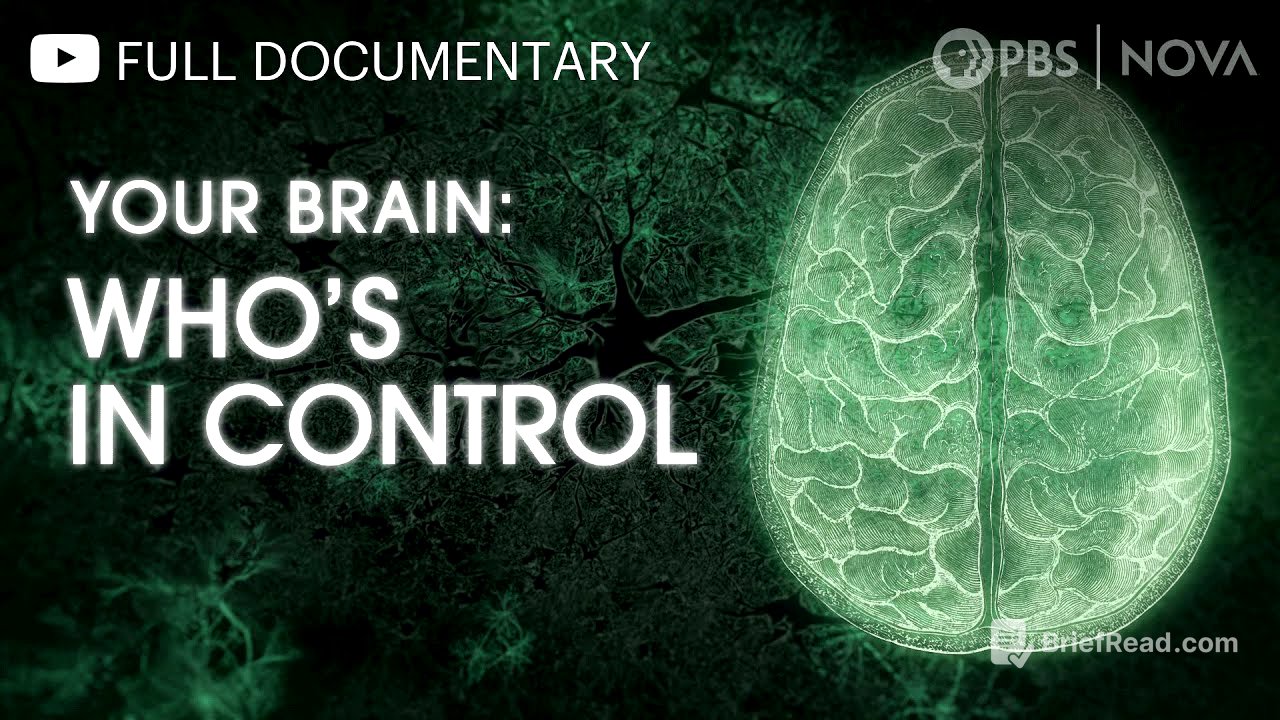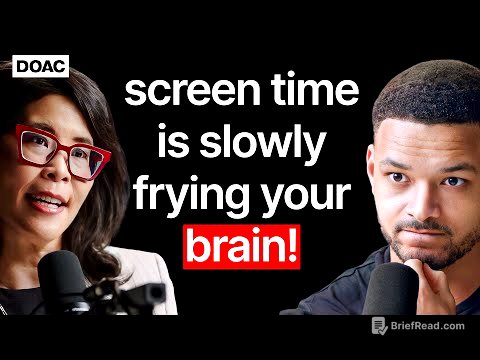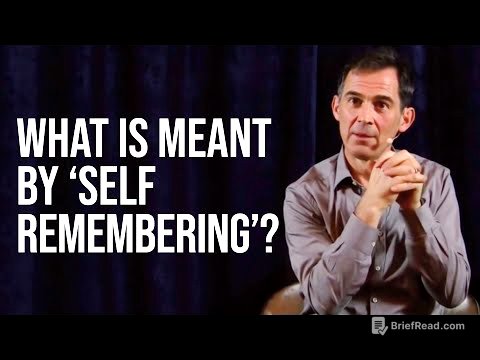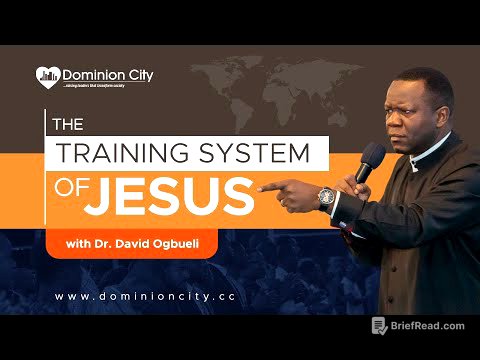TLDR;
This video explores the complex workings of the human brain, questioning the extent to which we are truly in control of our thoughts, decisions, and behaviors. It examines various neurological phenomena, including sleepwalking, anesthesia, and split-brain surgery, to reveal the intricate interplay between conscious and unconscious processes. The video also investigates the influence of emotions, trauma, and social interactions on brain function, ultimately suggesting that our sense of self and agency is a multifaceted illusion created by the brain's remarkable ability to make meaning.
- The brain operates largely unconsciously, influencing our actions without our awareness.
- Consciousness is not an all-or-none phenomenon, as demonstrated by sleepwalking and anesthesia.
- The two hemispheres of the brain can function independently, as seen in split-brain patients.
- Emotions, trauma, and social interactions profoundly shape brain structure and function.
- Our sense of agency is a fragile construct that can be manipulated and is not always accurate.
Introduction [0:00]
The video introduces the brain as the biggest mystery in science, responsible for personality, thoughts, and feelings. It questions the extent to which we are aware and in control of our brain's processes, suggesting that many decisions and behaviors are driven by unconscious mechanisms. The video aims to explore what truly drives our decisions and who or what is really in control.
Sleepwalking and the Brain [3:22]
The chapter explores sleepwalking as a glitch in the system where individuals perform complex actions without conscious control. Sleepwalking demonstrates that our identity is not always in control, as patients often disavow their actions during these episodes. The ability to walk is an extremely complex process that we take for granted, involving numerous inputs and outputs that the brain coordinates independently. During sleepwalking, the prefrontal cortex, responsible for decision-making and self-awareness, remains largely inactive, while the motor cortex, visual cortex, and other areas controlling movement and balance can function without conscious input. This reveals that many parts of the brain can be engaged without conscious awareness.
Anesthesia and the Brain [8:36]
The chapter discusses anesthesia and how it removes conscious experience by altering communication between brain regions. Consciousness exists in degrees, with anesthesia inducing a more profound loss of consciousness than sleep. Anesthesiologists use drugs to ensure patients don't perceive pain, move, or remember anything during surgery, while also controlling physiological systems. An EEG measures brain wave activity, showing that a conscious brain has diverse and dynamic activity, while anesthesia reduces it to dull, slow-rolling waves. The thalamus acts as a central communication hub in the brain, processing auditory, visual, and pain information. Anesthesia drugs alter how different parts of the brain communicate, and disrupting this communication can induce unconsciousness.
Results of Split Brain Surgery [14:18]
The chapter explores split-brain surgery, where the corpus callosum connecting the two hemispheres is severed, preventing communication between them. This procedure, primarily used to treat epilepsy, can result in two separated minds within a single brain. Experiments with split-brain patients reveal that each hemisphere can function independently, controlling different sides of the body and processing information separately. The left hemisphere is typically responsible for language and speech, while the right hemisphere is important for evaluating emotions and visual space. In one experiment, a split-brain patient was shown the word "Texas" to his right hemisphere (the non-verbal side) and he couldn't verbally identify the word, but he could draw a cowboy hat with his left hand, demonstrating that his right hemisphere understood the word even though his left hemisphere did not.
Emotions and the Brain [22:23]
The chapter discusses how emotions influence our brains and decision-making processes. Our brains have evolved to effortlessly reason about other people, and emotions guide our behavior. Neuroscientist Luke Chang studies how emotions like greed and guilt affect our decisions, using the Trust Game to observe brain activity during cooperative and selfish choices. Feelings of guilt, associated with activity in the insula, can drive people to act cooperatively even when they don't have to. The prefrontal cortex acts as the brain's thermostat, processing emotions and regulating behavior. Damage to the prefrontal cortex, as seen in the case of Phineas Gage, can result in personality changes and difficulty regulating emotions. Emotions help us make better decisions by aligning our actions with our goals and values.
How Does Trauma Affect the Brain? [30:01]
The chapter explores how trauma affects the brain and can even impact future generations. Traumatic events can cause lasting changes in the brain and body, with effects that can persist throughout a lifetime. Studies on the Dutch famine during World War II revealed that the children and grandchildren of those who suffered through the famine experienced metabolic issues. Your environment and experiences can change the way your genes are activated in your body and brain. Bianca Jones Marlin studies how stress and trauma can alter the biology of offspring, using mice to investigate how learned associations, like pairing the smell of almond with an electric shock, can be passed down to subsequent generations. These changes suggest that experiences can be inherited, influencing the wiring and function of the brain across generations.
How Much Control Do We Have of Our Brain? [35:39]
The chapter questions how much control we truly have over our brains, exploring the feeling of agency and how it can be manipulated. Neuroscientist Uri Maoz uses magic tricks and experiments to challenge our sense of control and demonstrate that our choices may not always be as straightforward as we believe. An experiment using transcranial magnetic stimulation (TMS) shows that even when we initiate a movement, our sense of agency can be disrupted by external factors. Our experience of voluntary action is retrospective, with the brain interpreting our actions and determining if they align with our sense of free will. Our sense of agency is a fragile construct that can be manipulated, and it relies on feedback from our actions.
Creativity and the Brain [45:44]
The chapter explores creativity and how letting go of conscious control can lead to amazing results. Charles Limb studies the brain activity of freestyle rappers to understand how improvisation works. When improvising, the prefrontal cortex, which is linked to self-monitoring, deactivates, allowing for more spontaneous and creative expression. Being too self-conscious and trying to exert conscious control can hinder performance. Every human being is creative because life is unscripted and we constantly encounter unplanned situations.
Conclusion [50:17]
The video concludes by emphasizing that the brain is a complex collection of intricate parts, many of which operate unconsciously. These parts work together to create our perception of self. Every experience, thought, memory, and sensation originates in the brain, and our individual patterns of neuronal connections create our unique identities. While we may not be able to control everything that makes us who we are, becoming more aware of the unconscious processes in our brains can help us understand what drives us and what we can ultimately control.









